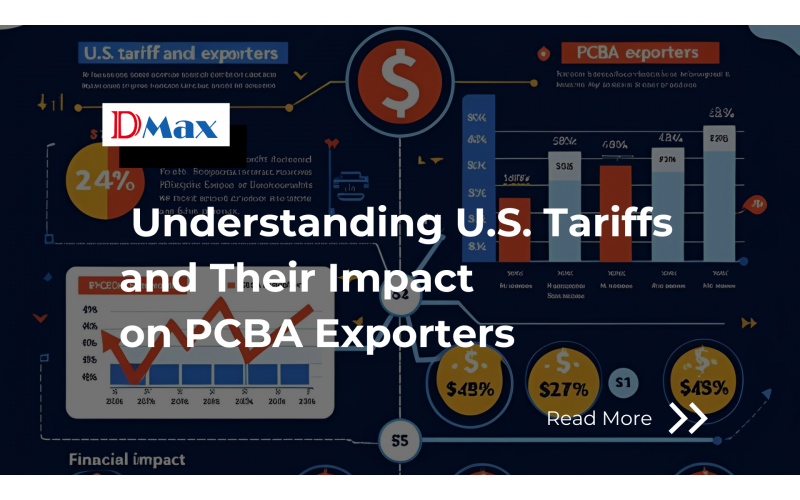
-
2025May
-
Understanding U.S. Tariffs and Their Impact on PCBA Exporters
What Are Section 301 Tariffs—and Why Do They Matter?
In 2018, the U.S. implemented Section 301 tariffs on a wide range of Chinese goods, including electronic components and finished assemblies. This means many products made in China face an additional 7.5–25% import duty when entering the U.S. market.
For U.S. buyers, this added cost is often unacceptable—driving them to seek alternatives in Taiwan, Vietnam, or other Southeast Asian regions.The “Made in Taiwan” Advantage
Taiwan's EMS companies have emerged as a strong alternative for PCBA exports to the U.S. due to several factors:
✅ No Section 301 Tariffs – Taiwan-manufactured goods are currently not subject to the same punitive tariffs as China-made products.
✅ Mature PCBA Industry – With decades of experience, Taiwan offers high-quality manufacturing, reliable delivery, and technical support.
✅ Flexible Order Sizes – Taiwanese suppliers are more willing to handle low- to mid-volume orders, which is ideal for startups and product development phases.
✅ Better Communication – English-speaking teams and familiarity with Western business culture support faster alignment with U.S. client expectations.How to Avoid U.S. Customs Issues: Documentation Matters
To claim tariff exemptions or avoid delays at customs, exporters must provide accurate and complete documentation. These include:
Certificate of Origin (COO) – Proves the product is made in Taiwan.
Commercial Invoice with HTS Codes – Clear product descriptions and Harmonized Tariff Schedule codes are essential.
Packing List & Shipping Instructions – Helps customs verify shipment contents quickly.
Form A or other Free Trade Agreement forms (if applicable)—Though Taiwan is not part of a U.S. FTA, documentation still affects smooth clearance.
⚠️ Note: Misclassification of HTS codes or vague descriptions can trigger higher tariffs or customs audits.Best Practices for PCBA Exporters to the U.S.
- Clarify Origin at the Start - Many customers now ask “Is this made in China?” at the quoting stage. Clearly stating that the entire PCBA process is done in Taiwan builds trust.
- Collaborate on Customs Strategy - EMS suppliers should help customers prepare paperwork, identify suitable incoterms (e.g. DDP, FOB), and recommend experienced freight forwarders.
- Update HTS Classifications Regularly - HTS codes change over time, and new regulations may be added. Stay in contact with your freight forwarder or customs broker to avoid surprises.
- Keep Quality and Traceability High - U.S. buyers expect more than just tariff savings. A stable EMS partner should also provide detailed QC reports, testing protocols, and part traceability to meet regulatory or industry-specific requirements.
How We Help U.S. Clients at Dmax?
At Dmax, we've helped numerous U.S. clients transition from China-based production to Taiwan for PCBA manufacturing. Whether it's a pilot project, full-scale rollout, or a shift in global strategy, we support our customers with:
Detailed export documentation
English-language technical communication
Flexible production capabilities (from 20 pcs to thousands)
Transparent production updates and QC reports
Let us know your concerns—from component sourcing to customs—we’re happy to help you navigate the complexities of U.S. tariffs with ease.
